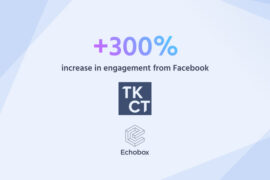In the last several months, the COVID-19 pandemic has changed our lives, disrupted our daily routines and raised major questions about the future. Coronavirus’ impact has been profound in certain industries. Publishers, many of whom already faced challenging times prior to the existence of COVID-19, have been hit particularly hard in some cases.
Yet in this time of uncertainty, people are turning to the media for crucial, reliable news and informative content. Now more than ever, the need for quality journalism is evident. We therefore set out to study how this need has translated into online traffic for publishers during the COVID-19 pandemic.
COVID-19 impact on publisher traffic worldwide
As the world sought to understand and track how the coronavirus pandemic unfolded throughout the spring, traffic to news sites peaked in March but appeared to return to pre-COVID levels by mid-April. Other sectors, including food retail, entertainment and education, also experienced peaks in traffic as people shifted their shopping, recreation and schooling online.
In our first piece of research related to the pandemic, How coronavirus has changed the face of news in less than 30 days, we examined the rise of coronavirus coverage in the global news agenda. We discovered that in less than one month, global shares related to coronavirus increased an astounding 16x.
Studying the shares of coronavirus news on social media, we observed how rapidly the topic came to dominate social media in certain countries most initially affected:
- France
- Germany
- Italy
- Spain
- United Kingdom
- United States
To discover how and when coronavirus news rose to prominence on social media in different countries – and how these trends mirrored the domestic spread of COVID-19 cases – download the white paper:

Overall traffic and social media traffic both grew for publishers during the COVID-19 pandemic
Following our initial analysis of coronavirus’ impact on social media, we decided to carry out a new study, Publishers and the pandemic: part 1, to understand the coronavirus impact on publisher traffic. We analyzed traffic to the websites of more than 700 leading publishers in 43 countries to answer questions including:
- How did COVID-19 impact publishers’ overall traffic?
- How did COVID-19 impact publishers’ traffic from social media?
- How significant was this impact?
- Which countries saw the sharpest rises in social traffic during the coronavirus pandemic?
- Which countries recorded the steepest drops in social traffic during the coronavirus pandemic?
(To find out, and to consult our full methodology, please download our white paper.)
Our research found that during the coronavirus pandemic, overall publishers have witnessed significant increases in both total traffic and social traffic to their websites, delivering an important boost in pageviews as well as additional opportunities to engage audiences and attract new subscribers.
On average, total traffic to publisher websites grew by a massive 65%, meaning that a publisher who received 10 million daily pageviews prior to COVID-19 would now be recording 16.5 million pageviews per day.
Traffic from social media also saw robust growth – download the full white paper to see how much publishers’ traffic from social media increased since the coronavirus pandemic took hold.

COVID-19 impact on social media traffic by country
Countries have adopted different policies and strategies to flatten the curve, and we know COVID-19 has not affected all regions equally. We therefore wanted to examine how publisher traffic in different countries had fared.
Of the 43 countries we studied, publishers in 33 countries saw growth in social media traffic, while publishers in the remaining 10 countries saw an overall decline in social traffic. The below map indicates the countries whose publishers have seen the most pronounced spikes in traffic from social media:

Which countries’ publishers had the biggest wins and the largest losses in social media traffic during the COVID-19 pandemic?
To discover the 10 countries where social traffic increased the most for publishers, and the countries where social traffic decreased, download the full white paper:

How can publishers sustain coronavirus traffic growth?
COVID-19 has generated a significant impact on publisher traffic, and audience behaviors and consumption are still evolving.
As this global pandemic continues to unfold, how can publishers navigate these changes to lock in traffic and audience growth?
Since certain publishers have managed to grow their traffic significantly against the backdrop of COVID-19, we wanted to examine the possible reasons they outperformed their peers during this moment in history.
Given our unique and substantial data set on how publishers worldwide use artificial intelligence for social media publishing, we decided to study how the use of AI during the COVID-19 pandemic has impacted social media traffic. We measured the traffic variations for publishers who used AI and compared them to traffic variations for publishers who did not use AI.
We observed a correlation between publishers’ use of AI and their increase in traffic from social media: Publishers who used AI saw an average increase in social traffic of +21%, compared to a +10.5% lift for publishers who managed their social media publishing manually.
In other words, publishers who used AI during the coronavirus pandemic saw double the increase in social traffic compared to those who did not use AI.
Spotlight on Newsweek
Echobox client Newsweek used the Echobox AI to share compelling coronavirus content and outperformed its peers in social traffic growth during the pandemic: Newsweek’s social traffic (average daily pageviews from Facebook and Twitter) increased by 52%, whereas social media traffic for US publishers increased by just 5.6% on average during the pandemic.
Learn how Newsweek’s social media coordinators use the Echobox AI to share the copious new content Newsweek produces daily, and to automatically identify and re-share Newsweek’s best-performing content:

Publishers are using AI to lock in COVID-19 traffic growth
In these unprecedented times, traffic trends can fluctuate quickly. Evolving circumstances and changes to staff availability also mean publishers must be able to react swiftly and cope with new constraints. As a result, many are turning to AI for assistance with their social media management, and to draw greater value from their social presence.
How exactly can AI help publishers adapt to new traffic trends and lock in traffic growth?
By ensuring stories are distributed on social media in the most effective way, at the best time, AI can help publishers make the most of changing traffic trends, at all hours of the day.
A leading solution for this is Echobox. Built on a vast array of sophisticated algorithms that work seamlessly together, Echobox can automate a publisher’s social media activity partially or in full. Echobox’s recommendations adjust in real time according to various inputs, including content streams, social media activity and audience behaviors. This means Echobox learns from each publisher’s specific content, audiences and social pages.
Over the last seven years, Echobox has captured and trained off more than 245 million data points from the world’s leading publishers. By continuously learning from publisher content and audience data, Echobox has developed an unrivalled understanding of social platform algorithms, which posts are most likely to go viral with a specific audience, and the optimal posting time for each article. In this way, Echobox helps publishers increase traffic from social media and expand reach while saving time.
To learn how Echobox can help you maintain your coronavirus traffic growth (or correct any downturns) and engage new social audiences, get in touch with us.




